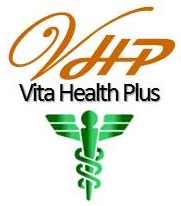Vitamins and Minerals
Vitamins and minerals are essential substances that our bodies need to develop and function normally. The known vitamins include A, C, D, E, and K, and the B vitamins: thiamin (B1), riboflavin (B2), niacin (B3), pantothenic acid (B5), pyridoxal (B6), cobalamin (B12), biotin, and folate/folic acid. A number of minerals are essential for health: calcium, phosphorus, potassium, sodium, chloride, magnesium, iron, zinc, iodine, sulfur, cobalt, copper, fluoride, manganese, and selenium. The Dietary Guidelines for Americans 2015–2020 recommends that people should aim to meet their nutrient requirements through a healthy eating pattern that includes nutrient-dense forms of foods.
Multivitamin/Multimineral Supplements
Multivitamins/multimineral (MVMs) are the most frequently used dietary supplements, with close to half of American adults taking them. MVMs cannot take the place of eating a variety of foods that are important to a healthy diet. Foods provide more than vitamins and minerals. Many foods also have fiber and other substances that can provide health benefits. However, some people who don’t get enough vitamins and minerals from food alone, or who have certain medical conditions, might benefit from taking one or more of these nutrients found in single-nutrient supplements or in MVMs. However, evidence to support their use for overall health or disease prevention in the general population remains limited.
Bottom Line:
- Most individuals can get all of the necessary vitamins and minerals through a healthy eating pattern of nutrient-dense foods. The Dietary Guidelines for Americans 2015–2020 provides recommendations for specific populations, including women who are or may become pregnant, women who breastfeed, and people ages 50 and over.
- Taking an MVM increases overall nutrient intake and helps some people get the recommended amounts of vitamins and minerals when they can’t or don’t get them from food alone. But taking an MVM can also raise the chances of getting too much of some nutrients, like iron, vitamin A, zinc, niacin, and folate/folic acid, especially when a person takes more than a basic, once-daily product that provides 100 percent of the daily value (DV) of nutrients.
- The Age-Related Eye Disease Study (AREDS), which was led by NIH’s National Eye Institute and concluded in 2001, showed that daily high doses of vitamins C and E, beta-carotene, and the minerals zinc and copper—called the AREDS formulation—can help slow the progression to advanced age-related macular degeneration (AMD), a blinding eye disease.
- Data from the later AREDS2 study showed that removing beta-carotene from the AREDS formulation didn’t lessen its protective effect against developing advanced AMD. AREDS2 also showed that neither omega-3 fatty acids nor lutein/zeaxanthin, when added to the original AREDS formulation, affected the need for cataract surgery.
- There’s no standard or regulatory definition for MVMs, or any dietary supplement, as to what nutrients they must contain or at what levels. Manufacturers choose which vitamins, minerals, and other ingredients, as well as their amounts, to include in their products. Simply stated, dietary supplements aren’t required to be standardized in the United States. However, they are required to bear a Supplement Facts label and ingredient list describing what’s in the product.
- Read the Supplement Facts label to identify MVMs in your supplement product. Be sure to check the percent daily value (% DV) to see what proportion of your daily allotment you’re getting.
- People with healthier diets and lifestyles are more likely to take dietary supplements, making it hard to identify any benefits from their use. There’s no convincing evidence that MVMs help prevent chronic disease.
Safety
- Taking a daily dose of a basic MVM is unlikely to pose a health risk for most people. However, if you consume fortified foods and beverages (such as cereals or drinks with added vitamins and minerals) along with dietary supplements, you should make sure that your total intake of vitamins and minerals is not more than the safe upper limits for any nutrients. Read the Nutrition Facts label on packaged foods or the Supplement Facts label of MVMs to see if the level far exceeds 100% DV.
- Smokers, and possibly former smokers, should avoid MVM products that provide more than 100% DV for vitamin A (either as preformed retinol or beta-carotene or some combination of the two) because two studies have linked high supplemental doses of these nutrients with an increased risk of lung cancer in smokers.
- Taking excess amounts of vitamin, A (preformed retinol form, not as beta-carotene) during pregnancy has been shown to increase the risk of birth defects.
- Except in cases of iron deficiency or inadequacy, or unless a physician recommends otherwise, adult males and postmenopausal women should avoid using iron supplements or MVMs containing more than their recommended daily allowance for iron (8 mg/day). Iron supplements may be recommended for women of childbearing age, pregnant women, preterm infants, older infants, and teenage girls because they are at greater risk of developing deficiency. Yet, iron supplements are a leading cause of poisoning in young children, so parents and guardians should keep iron-containing supplements out of the reach of children.
- MVMs providing nutrients at or up to 100% DV do not typically interact with medications. However, if you take a blood thinner, such as warfarin (Coumadin and other brand names), talk to your health care provider before taking any MVM or dietary supplement that contains vitamin K (this vitamin lowers the medicine’s effectiveness, and doctors base the medicine’s dose partly on the overall amount of vitamin K a person usually consumes in foods and supplements).
The material provided here is for your information only. It is not intended to substitute for the medical expertise and advice of your health care provider(s). Discuss any decisions about treatment or care with your health care provider,
Source : NIH

